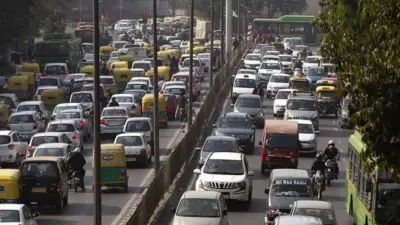Politics
3 Naxalites, Including Woman, Killed in Sukma Encounter with Security Forces
A woman among three Naxalites was killed in an encounter with security forces in Chhattisgarh's Sukma district on December 18. Police confirm the operation was based on specific intelligence.
Business
Shyam Dhani Industries IPO Opens Dec 22: Price Band, Details, and How to Apply
Shyam Dhani Industries Limited's SME IPO opens for subscription on December 22, 2025. Learn about the price band, lot size, and how to apply for this public issue.
World
Delhi Fog Crisis: Visibility Drops to 50m, AQI Nears Severe at 398
Delhi woke up to dense fog reducing visibility to 50 meters and air quality index (AQI) hitting 398, nearing severe levels. Flights and trains disrupted. Read for details and safety tips.
Entertainment
Singapore Police: No Foul Play Suspected in Singer Zubeen Garg's Death
Singapore Police confirm no foul play suspected in singer Zubeen Garg's death. Coroner's Inquiry set for 2026. Read the latest details and updates here.
Sports
Lifestyle
Health
Viral Kickboxing Video: Army Vet's Fitness Stuns Internet
A 61-year-old retired Lieutenant Colonel's intense kickboxing routine goes viral on X, drawing playful Mahatma Gandhi comparisons. Discover the story behind the fit veteran's discipline.
Diabetes Cases Projected to Reach 900 Million by 2050
New projections warn diabetes cases could hit 900 million globally by 2050, driven by modern lifestyles. Learn the causes, impacts, and prevention strategies to combat this silent pandemic.
Delhi roads see less traffic after GRAP-4 implementation
Delhi government reports a significant reduction in vehicular movement following the imposition of GRAP-4 anti-pollution measures. Read the full impact assessment here.
Six Kids Get HIV from Tainted Blood in Satna; 3 Suspended
Madhya Pradesh govt suspends three, including blood bank in-charge, after six children contract HIV via transfusion in Satna. Read the shocking details and official action.
David Caprio's Skin Cancer Scare: A Vital Warning
David Caprio, son of Judge Frank Caprio, shares a chilling skin cancer biopsy story. Learn about skin cancer risks, types like melanoma, and crucial prevention tips to protect yourself and family.
Technology
Get Updates
Subscribe to our newsletter to receive the latest updates in your inbox!
We hate spammers and never send spam








































